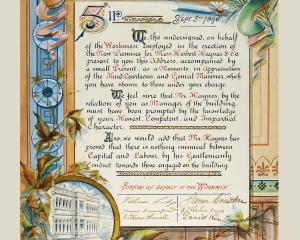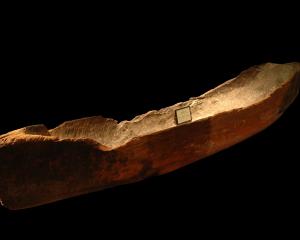
Sometimes an object’s relatively mundane appearance belies its significance.
For visitors wandering through the "A New Edinburgh" display at Toitū, there could be few items with a less prepossessing exterior than the Rev Thomas Burns’ visitation book.
It sits in its case, to all extents and purposes just a plain, lined notebook with row after row of his neat, closely written script crammed on to its pages.
I would be surprised if many visitors even notice it, let alone grasp that it is possibly the single most important documentary artefact in the Toitū collection.

With the most recent official New Zealand census behind us, it’s worth considering why a census substitute from the 1850s might be so valuable.
The purpose of a census is eminently practical; to gather data from which to generate statistics.
Those numbers are then used to focus every facet of government activity, determining official policy and its implementation.
But longer term, the information gathered assumes increasing historical significance, offering a uniquely detailed record of the people of the past.
Genealogists and historians, for example, use British census returns from 1841 onwards as the bedrock source of research information for the societies from which most of New Zealand’s colonial settlers came.
Unfortunately, no such records are available for colonial New Zealand itself.
Even though the colonial government here began its own series of census data collection in 1851, the actual census forms were destroyed and only the statistics generated from them preserved.
This is one of the great tragedies of New Zealand history.
It means that while you can often find invaluable details of a Scottish or English ancestor in the British census records, that same ancestor "disappears" into historical anonymity once they reach New Zealand.
Hence the importance of census substitutes to try to remedy that deficiency in our official record.
Among those alternative sources, there are few that match the census-like precision of the Rev Thomas Burns’ humble notebook.

He likewise made it his business to enumerate the households of Dunedin on an annual basis between 1848 and 1858.
His purpose was practical; to establish who the inhabitants of his "parish" were and what their religious needs might be.
But, in recording their names, ages, occupations, relationships, and religious affiliation, he also preserved a record of Dunedin’s founding settler population that has no equivalent in any other New Zealand settlement.
It is also potentially significant for mana whenua, as Burns recorded four visits to the Māori kaik at Henley in February 1849, January 1851, December 1851 and December 1852.
He records the intriguing multinational origins of the ex-whalers who had become part of the Māori community there; men from England, Sydney, Hobart, Antigua, Jamaica, New York and Halifax in Nova Scotia.
His enumeration of what he calls the "aborigines" provides invaluable details on some notable Kāi Tahu ancestors of this period, and a population count: 166 in total across the Otago Block in the three settlements — at the Otago Heads, the mouth of the Taieri and the mouth of the Clutha.
I was once asked what single item I would try to rescue if the museum were to catch fire. I had no hesitation in naming Burns’ visitation book as my "must-save" item.
Despite its humble exterior, the records its pages contain make it a priceless treasure for our community.
It underpins, for example, the museum’s recent documentary about the founding of Otago, Journey to New Edinburgh, providing key personal details on many of the settlement’s pioneer families.
In recognition of its importance, the book was recently conserved and digitised.
While not yet available online, there is a hard copy available in the museum’s research centre and plans to incorporate the digital version in a future interactive display in the New Edinburgh gallery.
— Sean Brosnahan is Toitū Otago Settlers Museum curator.












